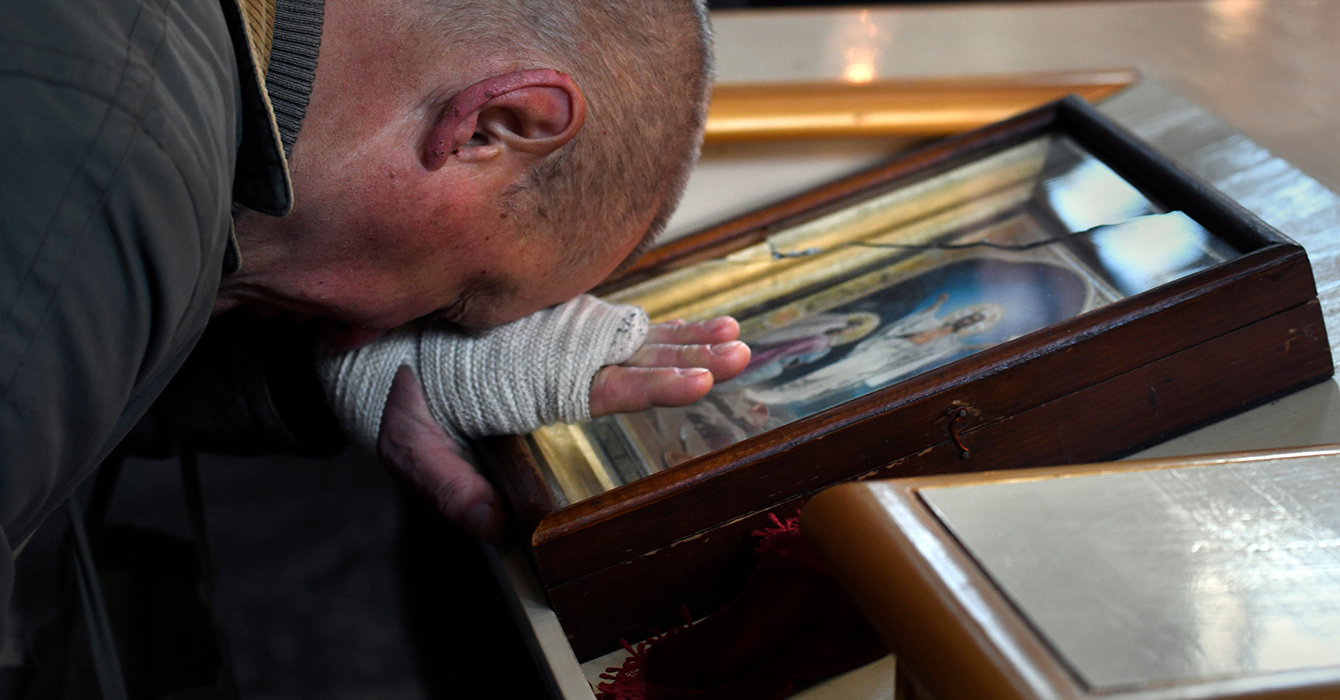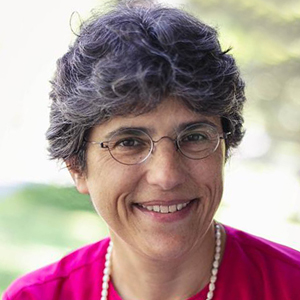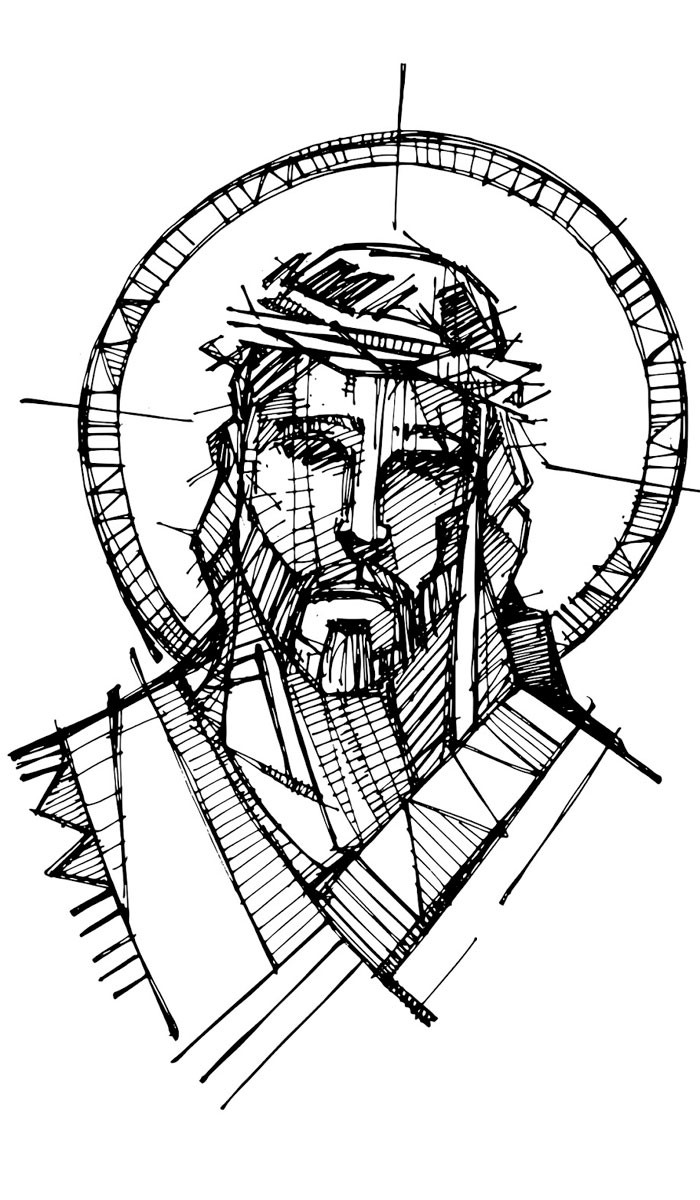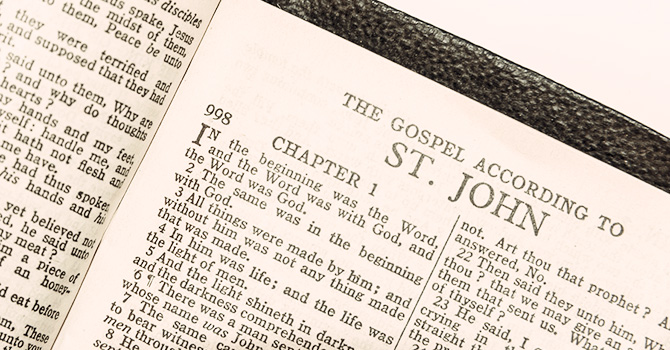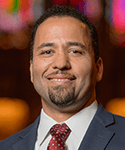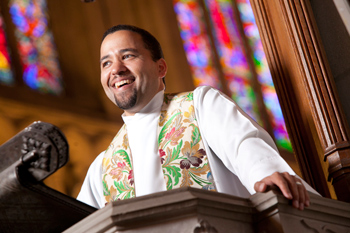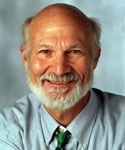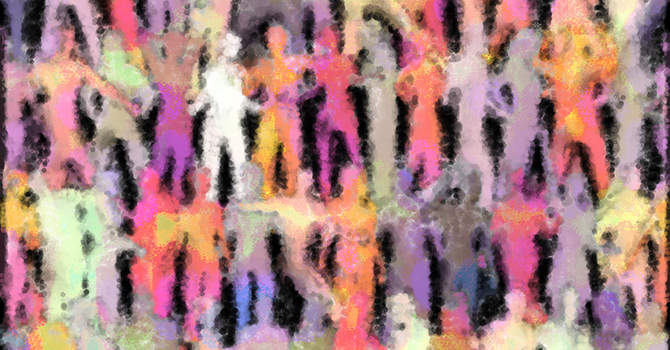John 20:19-31 (Revelation 1:4-8; Psalm 118:14-29 or 150; Acts 5:27-32)
Editor’s note: Faith & Leadership offers sermons that shed light on issues of Christian leadership. This sermon was preached April 11, 2010, at Duke University Chapel. To hear a recording or watch a video of this sermon, go to the Chapel website.
It’s “Low Sunday,” the Sunday after Easter. “Low Sunday” -- the term supposedly refers to church attendance: presumably, everyone who is not here today exhausted their religious energy last week. But there’s got to be more to it than that. If people stay away from church in record numbers after Easter Sunday, then you have to wonder if it has something to do with the fact that for many, even some of us here today, Easter season is a disappointment.
A week ago we proclaimed that Christ is risen, triumphant over sin and death. Yet today the graves of those we love so dearly are not empty, nor does the news of the past week indicate that sin has been eradicated from our world. But we don’t need the mass media to tell us that; our own hearts and homes and workplaces offer abundant evidence that sin has not loosened its grip since last Sunday. Some years, for any one of us, there is a huge gap between the Easter proclamation of joy and the felt reality of grief, guilt, chaos, hopelessness -- a gap that threatens to swallow us and our fragile faith.
That is why it is good to have the Gospel of John in the Bible, because John takes on directly the disappointment of Easter, the real difficulty of believing two things: first, that Jesus has risen from the dead, and second, that anything has really changed as a result. John writes, he tells us, so that we may learn to believe these things that are hard to believe, and our lives be changed as a result. “I write these things,” John says, “so that, believing, you may have life in [Jesus’] name” (20:31).
In John’s Gospel, Thomas is the one who flagrantly calls attention to the gap between the Easter proclamation and our present experience. Thomas is stuck in that gap. He wasn’t there when the risen Jesus appeared to the other disciples, but he has heard that Jesus is alive, and he’s not buying it. Disappointed, heartbroken by the death of his Lord, Thomas now just wants to get on with his life; he was off somewhere else, on his own, when Jesus showed up in that locked room. “Doubting Thomas,” we call him, but John calls Thomas “the Twin,” and that nickname may tell us something important. If Thomas has a sibling, we never hear anything about it, so why does John make a point of naming him (three times) as the Twin?
I need to tell you something about John’s mind: he thinks like a poet -- suggestively, always choosing words that point to meanings he does not directly name. So maybe John is dropping a hint here, and his point is that Thomas is our twin brother, embedded within the story of Jesus’ resurrection. He is our identical sibling, articulating our disappointment and doubt that anything has changed, absolutely and forever, with Jesus’ death on the cross.
How Thomas finally comes to believe is one of the most familiar scenes in the gospel; countless artists and musicians have taken it as their theme. “Come on, thrust your hand into my side,” Jesus says. The instant Thomas touches the raw wound, he blurts out, “My Lord and my God.”
We all remember that single moment, but we forget what Jesus says next, though certainly the Evangelist John means us to ponder these words: “Because you have seen me you believe? Blessed are those who have not seen and yet have come to believe” (20:29). I hear some impatience in our Lord’s voice, as though Jesus were saying to Thomas and all subsequent doubters, ourselves included: “Look, I will not continue to do this. There is a better way to learn to believe than sticking your hand in my side. There’s a better way to feel the truth of the resurrection.”
Jesus has already shown his other disciples that better way, when he breathed into them the Holy Spirit. Jesus breathed the Spirit into them -- think about that, recalling John’s habit of suggesting meanings he does not spell out. John is telling a second creation story. Just as God once breathed life into Adam’s nostrils, so now Jesus breathes new life into his disciples, saying, “Receive the Holy Spirit. Whenever you forgive the sins of any, they are forgiven them” (20:22-23 ).
Through the Holy Spirit, Jesus is granting humans a power that previously belonged to God alone: the power to unlock the death grip that our sins have on our souls, to erase them from the cosmos. The power to forgive sins is the mark of a new creation, of a profoundly changed life not just for this small group of disciples, but potentially for humankind altogether.
Now how does that work? Think for a moment about the old creation story, in Genesis. Already in Eden, human lives came to be governed by shame and blame, anger and fear; the man turned against the woman, the woman turned against the snake, and all of them turned away from God.
But now the risen Jesus comes to the disciples when they are locked away in fear of their enemies, and he offers them a completely new version of the human story, in which forgiveness and freedom in the Spirit replace the old constraints of bitterness and blame. Jesus comes to that fearful community, tottering on the verge of collapse, and he breathes into it the Spirit that does not condemn, the Spirit of God that works in and through us for peace and wholeness.
The disciples are to carry that Spirit out into the world: “As the Father sent me, so I send you….Whenever you forgive the sins of any, they are forgiven them” (20:21, 23). The forgiveness of sins is the foundational mission of the church, as John conceives it. That is how we, Jesus’ disciples, are to practice resurrection, the new life that began with his victory on the cross. Practicing the forgiveness of sins is practicing resurrection; that is how we may come to believe that in the crucified and risen Lord, everything has changed.
“I was 16 when my mother left our family,” my friend said to me. This wise friend in Christ was telling me a story from many years in the past, after I had wondered out loud how it is that forgiving those who have sinned against us leads us deeper into faith. She went on: “I was convinced that she had ruined my life. What I lost when my mother left were things I really needed: the happiness I felt in our home, the special intimacy between the two of us; I even lost my picture of what I might be like as a woman. Sometimes I imagined that my hands were around her neck, and I was screaming, ‘You owe me!’
“My loss felt like a huge debt that was overwhelming us both: I could not live without what was missing, and of course, there was no way she could pay it back. People in my mother’s past owed her debts they could not pay. It just seemed to go on and on, an endless chain of unpaid debts, with the deficit always getting bigger. But then gradually, over years, I came to realize: That is what the cross is about -- Jesus paying off all those debts we owe to each other, which we can never pay.
“And this is the strange thing: once I knew that, that the debt had already been paid, then I could feel all my pain. We cannot be whole unless we go all the way into the depth of the pain and the wrongdoing. But to go all the way down, we need the Holy Spirit within us, giving us strength. Then we can be healed.”
My friend’s story of her young self suggests why Jesus might have been impatient with Thomas the Twin. Thomas wanted to believe, but in his pain and disappointment, he got the learning process inside out. Until he had thrust his hand into Jesus’ gaping wound, he refused to believe that there could be life beyond his loss. But my friend did the opposite, something more difficult and more hopeful: she exposed her own wound to Christ. She opened herself to the probing touch of God’s Holy Spirit and asked for healing.
“Shalom,” Jesus says to his disciples. “Receive the Holy Spirit,” the Spirit of shalom, of wholeness and peace. God’s Spirit within us frees us from the fear that there is no bottom to our loss, that the hole in our lives can never ever be filled. It frees us from all our vain attempts to fill the emptiness with sex or status or stuff -- something, anything that will plug the hole that finally only God’s love can heal.
As my friend’s story shows, forgiveness is not so much a feeling as it is work -- very often the work of years. “Forgiveness has many levels,” another wise friend once told me. “We have to work our way through them one by one.”
Probably in every case, the holy work of forgiveness challenges our natural feelings, and especially the instinct for justice. When I am suffering, I want the one who has hurt me to suffer -- what wronged child or spurned lover has not cried out for that? An innocent life has been taken; the killer must die -- what society, including ancient Israel, has not thought for a time that “a life for a life” was the best justice it could execute?
In fact, that does represent a form of justice. Ethicists call it retributive justice: the one who has inflicted suffering must pay with their own suffering, measure for measure. Retributive justice is useful in many situations; our courts use it, and on the whole we are grateful that they do. But that kind of justice should be recognized for what it is: a zero-sum game; it assumes that every loss is final and permanent.
The gospel, however, offers a vision and mandate for an altogether different kind of justice: restorative justice. The assumption here is that the God who triumphs over death is powerful to heal every wound, to grant new life where we can see only death and destruction. This is the justice of the resurrection, of the new creation in the risen Christ.
So Jesus comes to his disciples, locked away in fear of “the Jews,” as John says. In John’s Gospel, the word “Jews” is code for “the religious authorities”; of course they were all Jews, followers of Jesus or not.
Jesus shows his anxious and probably embittered disciples that they have a choice about what kind of justice they will work and pray for. “If you forgive the sins of any, they are forgiven them; if you retain the sins of any, they are retained.” Forgiving the sins of others -- that is restorative justice. In the power of the Holy Spirit, we, the disciples of Jesus, can put our best energies and creativity into the slow work of opening a space in our personal lives, our families and communities for God’s work of bringing life out of death, reconciliation out of alienation. Or we can choose to retain sins, seeking not erasure but punishment, not embrace but exclusion. The choice is real in any given instance, and it is ours to make.
Restorative justice, the forgiveness of sins, is the child of faith. It is born of the belief that beyond my suffering God is at work, working through us for healing. The forgiveness of sins is an expression of faith, however inarticulate, and it can also generate new faith. My own faith comes largely out of the experience of being forgiven, over and over again. But one experience in particular was formative.
It was 1969, and I was a teenager, spending the year at the Hebrew University in Jerusalem. My roommate was also an American, from a family of Hungarian Jews, most of whom had died at Auschwitz, including my friend’s older brother and sister. The survivors had settled in the U.S. and in Israel, and so on Sabbath my friend would visit her aunt and uncle on the coast south of Tel Aviv.
One weekend she asked me to come along. This was not exactly a routine visit home with the college roommate, since this Hungarian-Israeli family had had no contact with Christians since the war, when their trusted Christian neighbors had betrayed them to the Nazis and sent them to the death camps. Later my roommate admitted that her aunt and uncle had not been eager to welcome me into their home. But all they showed me was the warmest hospitality, and as the year went on, genuine love. They made me, a Christian, a member of the family.
This was my first profound experience of being forgiven. They forgave me for my religious identity -- hardly my fault, you might say, but six million European Jews had been murdered simply for their religious identity. The experience of receiving their forgiveness was life-changing for me, at a time when I was just beginning to ask what it might mean to be a Christian. In countless ways, I am still learning to believe out of what I experienced that year, now more than 40 years ago, spent almost entirely in the company of Jews.
Today, viewing my Israeli family through the lens of John’s Gospel, I understand better why the forgiveness of sins is the very first work the risen Jesus assigns his disciples. They were hiding in fear, because of their religious identity, and Jesus calls them to set that fear aside and go out in the power of the Holy Spirit. He empowers them to turn hatred and fear into genuine relationship, even into love.
Isn’t that just what my Jewish family did? Setting aside their natural feelings toward a Christian, feelings born of betrayal and unthinkable suffering, they redefined me not as enemy but as their own. These Hungarian Jews were not consciously following Jesus. Yet in modeling the forgiveness that Jesus taught his disciples, they taught me to believe.
It is Low Sunday. Low-spirited or not, we have come here, each of us hoping to believe that Jesus has risen from the dead and that something -- everything -- has changed as a result. And look, each of us has valuable experience that can help us believe: At some time, someone has forgiven us; at some time, we have forgiven. May knowledge of forgiveness be for us a source of mutual encouragement and hope, so that together we may learn to believe this hard thing -- that there is life abundant beyond sin and death -- and believing that, we will have life in Jesus’ name. Amen.





